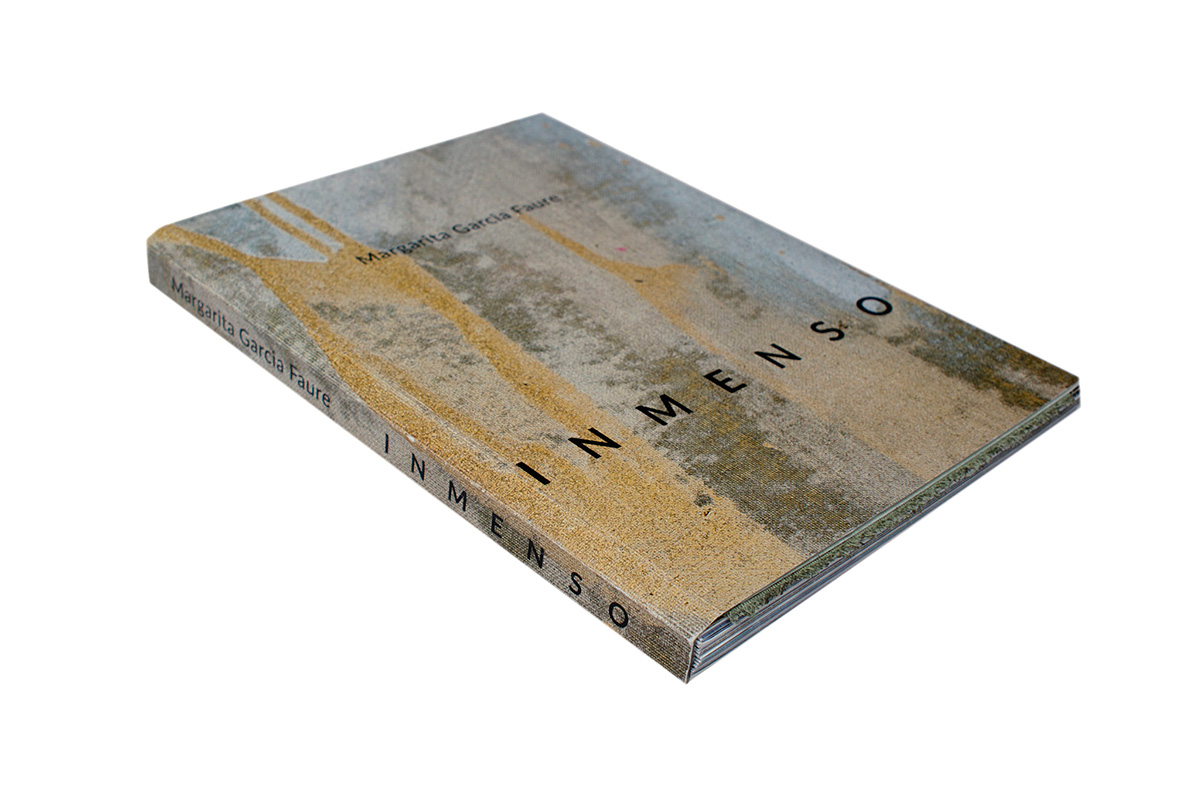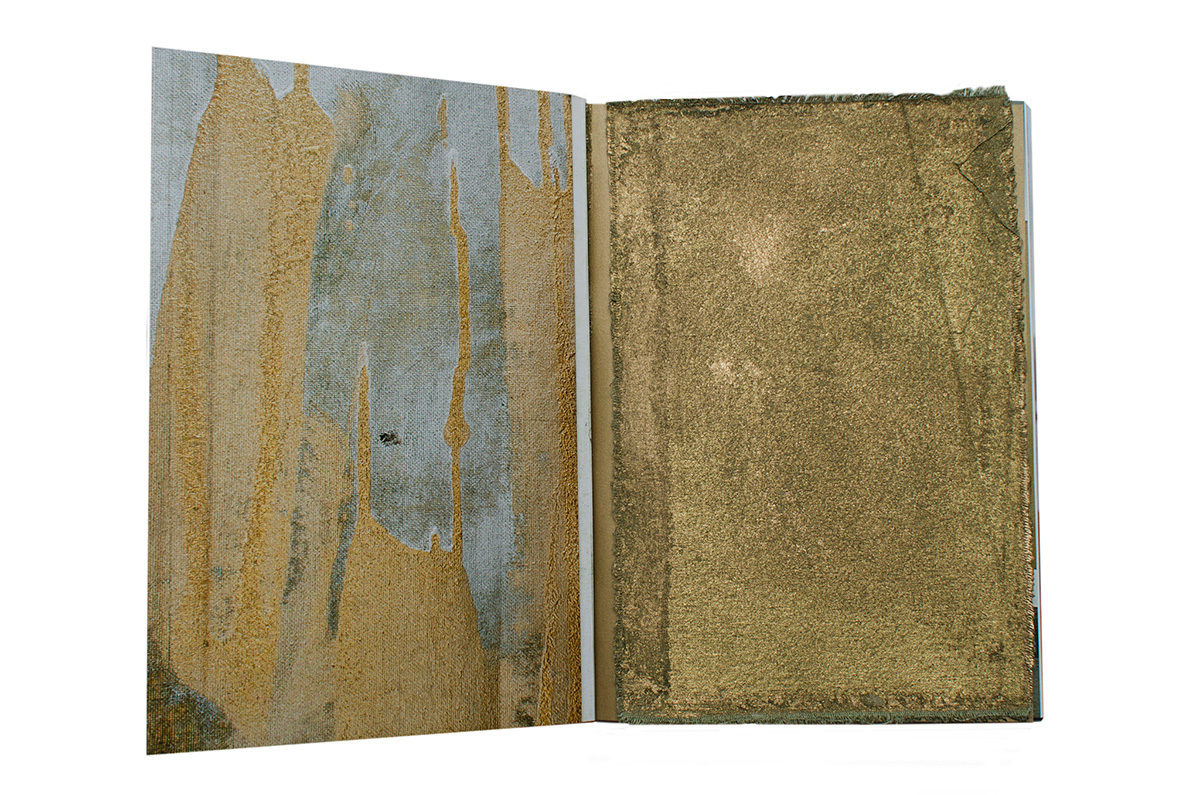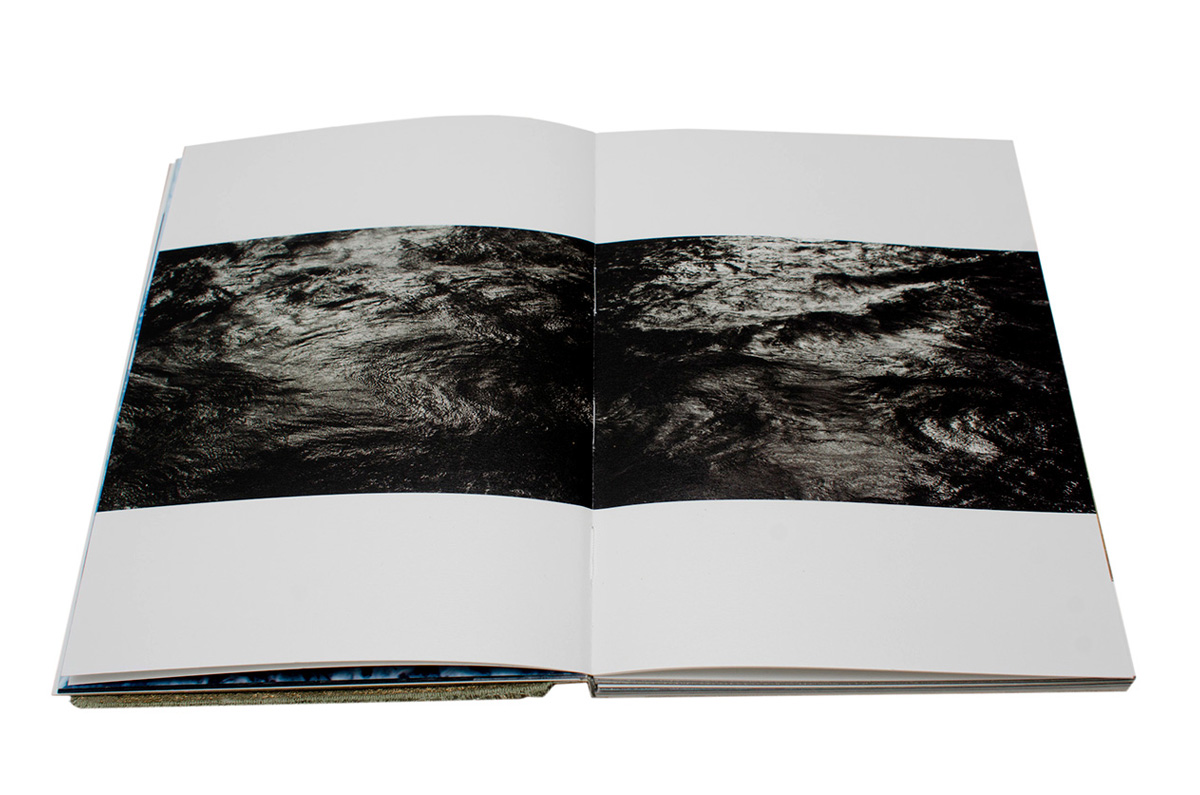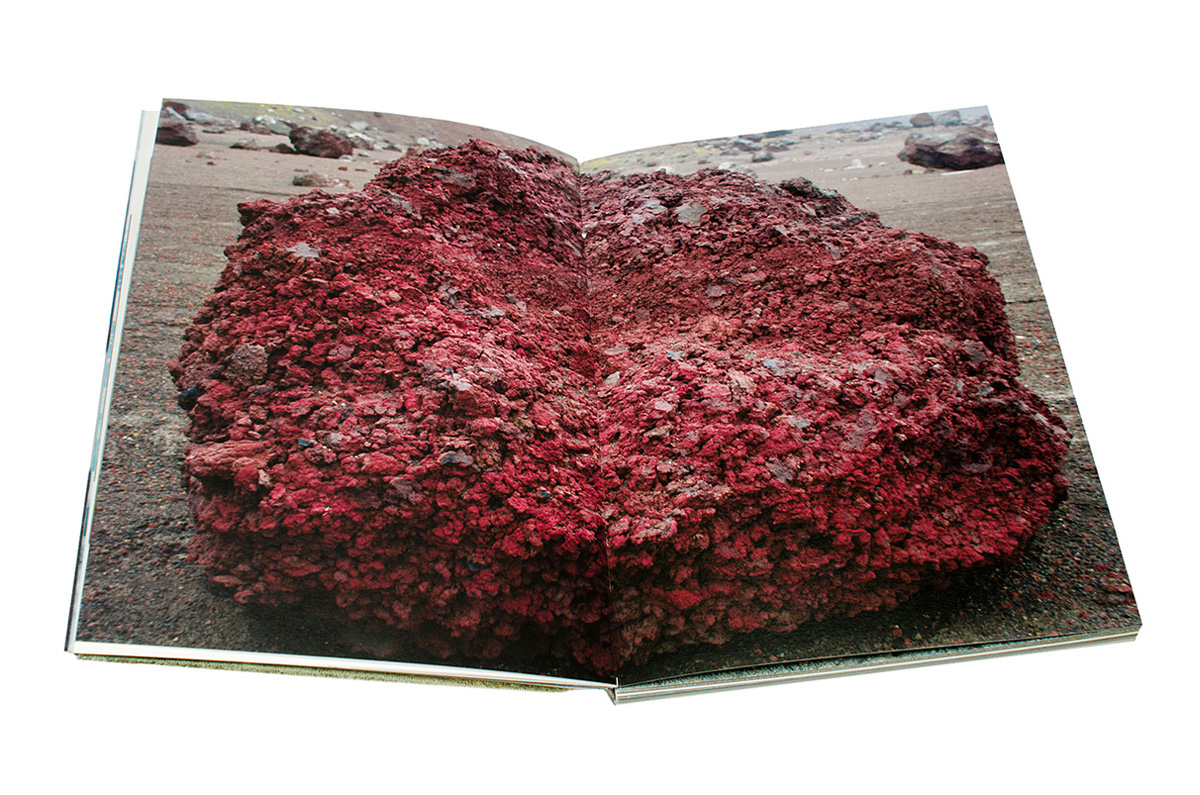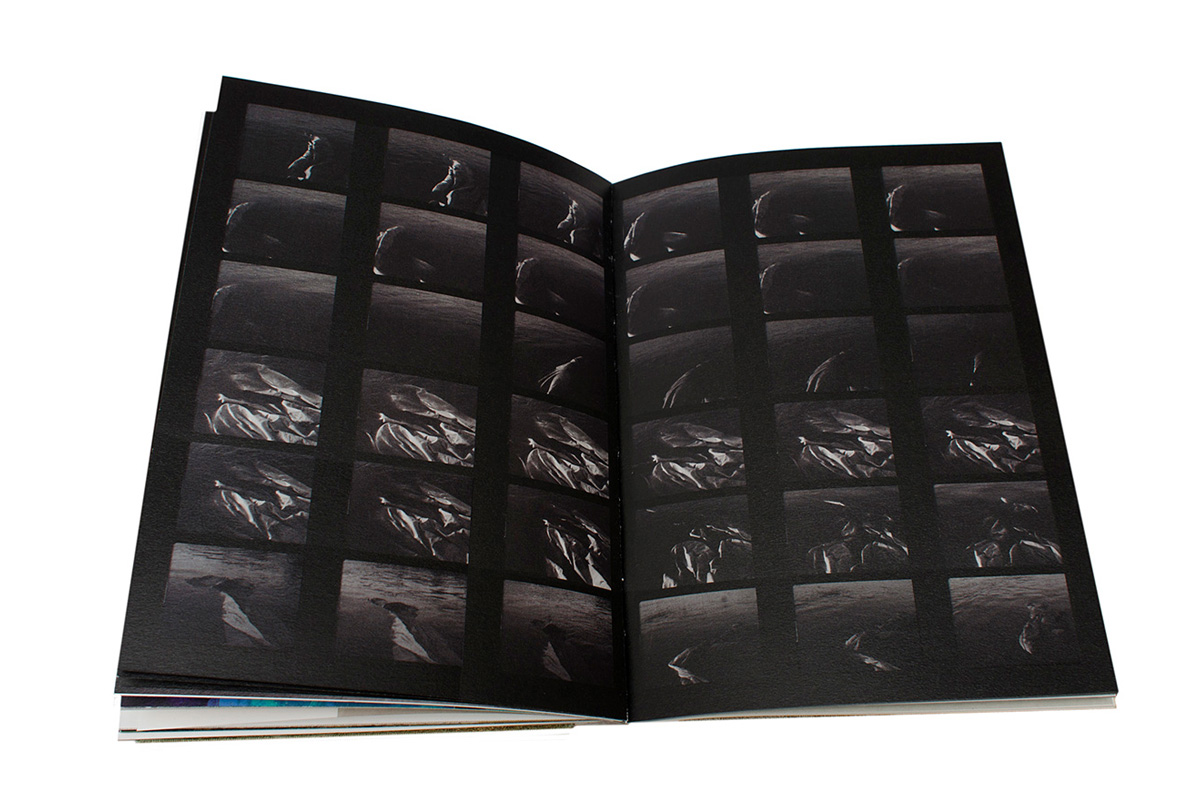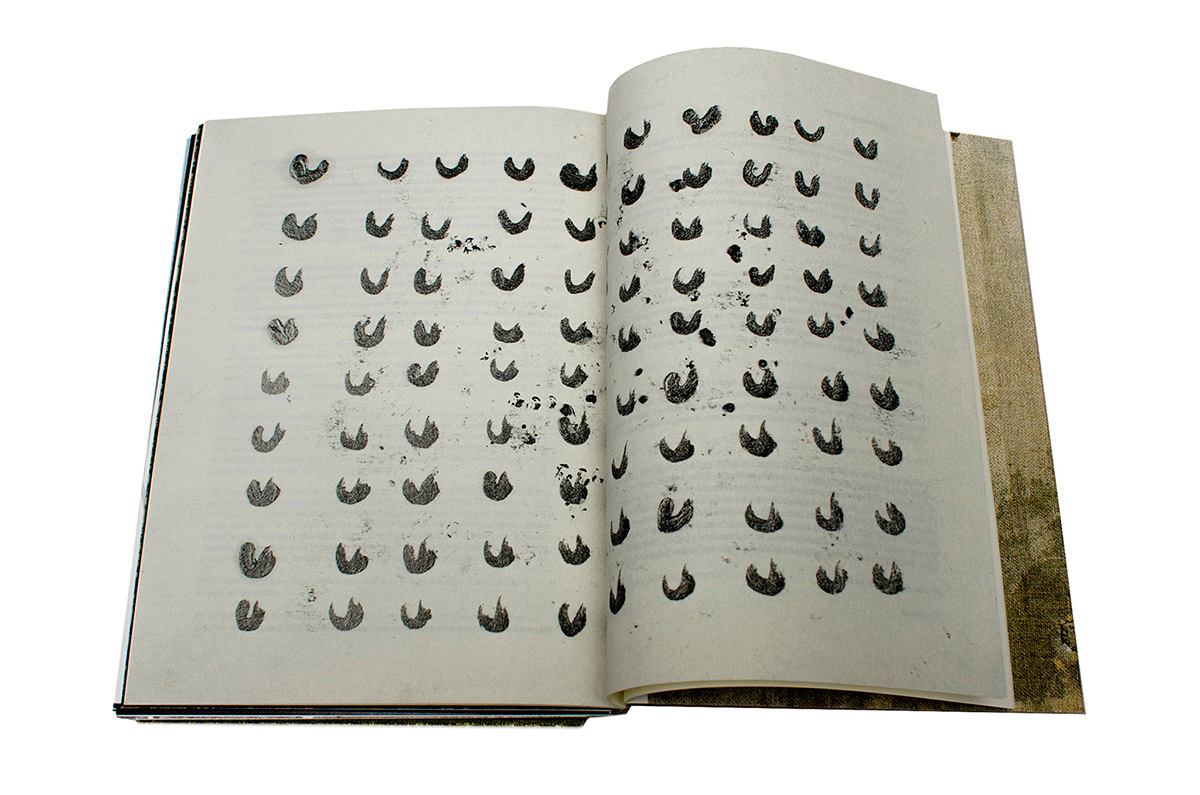As if light could be carried from place to place
A conversation between Margarita Garcia Faure and Javier Villa, book INMENSO, 2017
Painting and Skin
Javier Villa: Immense is a book that reexamines four projects to which—in at least three cases—painting is vastly important, projects on painting with everything, all the weight, that brings from Art History. They reactivate and heighten, on the one hand, the old relationship between painting and nature; on the other, they strain and exhaust painting, take it to an extreme in relation to its process: you hand paintbrushes over to nature as a possible final act. When the painter does not paint, but the work is about painting, is there any way to resume painting?
Margarita García Faure: Who knows? You’re right that it’s about a great love for painting. When I took painting to the desert, I had the sensation that I was taking a living body. In the Amazon, I started painting on a daily basis again: each morning I would prepare the pigments, paint, and wait for it to dry. At the end of the day, though, I would toss the canvas into the river. Almost all of it would be washed away, but something new appeared, and each morning I would start in again on the same canvas. It was ironic, but also a tribute to the ritual of painting. I understood that it was a very powerful gesture—especially when, in the photos there in the Amazon, I saw a dead body on that canvas in the water. “OK, so now I really am seeing a dead body in a muddy river.” That is my birthmark.
JV: In addition to the trauma of our generation because born during the dictatorship *, the act of painting and unpainting every day could refer to the constant return of another trauma—the trauma of painting. Artists from the late fifties and early sixties broke with pictorial formats: Alberto Greco left his painting outdoors or urinated on it; Yves Klein also exposed his Cosmogonies to the elements—years before, Lucio Fontana had slashed the canvas and, a few years later, Nicolás García Uriburu turned a river into a painting. Those are just a few examples that could be related to your projects in that they effect a pictorial trauma and, in some cases, register nature. It is necessary, it would seem, to always return to painting to retrieve that revolutionary gesture of slashing, of cutting, of breaking. Even though it opens up to the world—or perhaps because it does—painting cannot stop talking about itself and about its lost autonomy, as if any liberation produced a trauma. There is something of that in the project in the Amazon. You need that ritual of exhausting trauma, of wearing it out, in order to turn to something new. Paint again to unpaint every day. You perform the gesture of painting, and nature is the one who destroys it, or constructs a new gesture to open up new possibilities.
MGF: That’s true, but what the water did to the canvas or what the canvas did to the water was still brushstroke. It was still a question of a surface and of a gesture. It’s true that both were surface and gesture at the same time; they painted one another, and that pictorial tie is what turned them into living beings.
JV: Painting is still a river. One paints and flows, and then stops. When you stop, it’s because you are no longer looking at the river, even though your hand might want to keep moving. Was painting the initial tool because it was what you needed at that time to document nature, to understand matter, and to grasp, at least partly, the wind or the water?
MGF: It’s the tool I use to capture the world; I am very drawn to the idea of pictorial surface as skin. I am interested in permeability. What if painting is a being’s vast skin? How permeable or impermeable is that skin? When you go to an extreme setting, what do you experience? What do you let overtake you, what do you let transform you, and what don’t you? Wherever I’ve gone, I’ve always been open to the possibility that everything come apart and be overtaken. The first time that happened was in Antarctica. When I finally went outside with my canvas and brushes, I discovered that everything I had planned fell apart. “What do I paint now?” I asked myself. “Nothing. I can’t paint anything right here, right now.” So I painted nothing. At that moment, I had the feeling that the act itself, with no aesthetic intent, was the only thing possible. To leave a trace that would, in any case, later be read as painting. Painting is the trace of a movement, and that movement then turned into the movement of the wind blowing through the canvas, which had a number of holes in it.
JV: So the painting was skin that registered not only the place, but also what was happening to you. Was Antarctica the only place where that happened?
MGF: No, it happened when I went to the desert in Mexico too. The idea was to place myself in a state of abstraction. Not just paint abstraction, but be in that state. Not to try anything else. One day the painting started to fall off and curve, and I realized what I found so captivating was that it was alive, what I wanted to do was follow its steps. So I started to venture into the desert behind the painting, taking its lead, or the lead of the light it refracted. As if light could be physically carried from place to place.
JV: You get the sense that you yourself became painting in order to experience painting and the context, and how they are related. A connection with no preconceptions whatsoever: just letting oneself be painting, or letting the painting be whatever it may, whatever it is compelled to be.
MGF: That’s right. In the Amazon, I thought that that dead body in the water was painting who had died, along with the image of my body born in Argentina in 1977. I am thankful that all of that dies because that means it can be seen and turned into something else. That’s also why, in the images from Chaco region, my shadow is inside the hole. It is, in a way, a death.
Journey and Nature
JV: There is something romantic about these projects: the search for the exotic, exploration of extreme territories in pursuit of an extraordinary experience where epiphany or transformation is more likely.
MGF: I’m not sure whether it’s romanticism or being before the sublime—but it is, in any case, a slap in the face.
JV: You can’t get distracted from yourself.
MGF: It’s sheer presence. I am drawn to places so extreme that you have no choice but to give yourself over. You let go of your body, you let go of everything. Places like that are gateways.
JV: If nature offers those intense sensations, that sense of giving yourself over, the city is rife with the intensity of social tensions, but you end up numb to it. You close off instead of opening up. That’s why the pieces you make in the city are tied to an encapsulated time, to an enclosed vastness. But, beyond that romanticism or the sublime, it is necessary, it would seem, to go to those extreme places because they so blatantly evidence the devastation man has wreaked in the anthropocene age. You say that, in a way, in your texts: you are in touch with sublime nature that has been also altered and afflicted.
MGF: That’s right. All of those places are enormous natural reserves; they are very powerful on an energetic and symbolic level for human beings. Holy spaces in constant tension; though at risk of disappearing, they are still mighty—their power is palpable.
JV: Places to explore.
MGF: Places you have always dreamed of visiting that are, at the same time very complicated politically. Painting with gold in the Wirikuta desert in Mexico, where the mines have been a historical source of devastation, seemed, to me, like undertaking a pilgrimage to return the gold, to give something back, the excrement of the gods, as they say there. Something similar was at stake in the Amazon with the canvas and its action; I was painting and unpainting, but also cleansing that polluted river because the canvas could absorb some of the harmful substances. Small gestures within immensity.
JV: Each project had a closed cycle of its own. You seize something from the place—an image, ice, the elements, or the river water—but you also restore a certain balance, mostly in relation to the harm that we humans have done there.
MGF: It’s a symbolic act of something close to impossible. It’s an offering.
JV: I wonder if, through contact with non-Western cultures, one gets a more holistic vision of artistic practice, a vision more connected to the universe in a number of ways. I think you can sense that in a work—and its impact is transformative. As soon as you throw the painting into the Amazon, river is painting and painting is river.
MGF: In that back and forth, the river is a being and I am a being, and we converse, play, push and pull—that’s how it’s always been in ancient cultures.
Story and Photography
JV: Generally speaking, in works like this, the narrative is complex. I mean, how do you recount an experience or a sensation on the skin?
MGF: I aspire to make works where the material bears memory. And where those memories open up communication. I have the sense that a gateway to greater vulnerability opens up in the gesture—and that interests me.
JV: This work is not only about painting and nature, about travel and transformation, but also about registers. You work on a number of different layers or levels that add to one another: landscape, the painting that absorbs it, the photo that registers the painting registering the landscape, the word that registers your process registering. I think that art, over the course of the centuries, has been an attempt to understand how to tell society something as difficult and important as the transformative power of experience.
MGF: The great attempt! In these experiences, the place is usually decisive: it is what determines my course of action. It opens up and you have to hear what it has to say. Magic appears, the powerfulness of that new act where there is something that moves you, something beyond your head, and in each register a trace is engraved on another trace.
JV: It’s interesting because, on the one hand, you use painting as a device that registers the landscape, that absorbs nature. And, on the other, you take photographs of a landscape where you find a painting. You want to take a part of nature away with you in the painting, but you also want to find the painting in nature.
MGF: Yes, I think that the situation of the river that paints in the Amazon comes from Antarctica, where I discovered that nature makes amazing paintings. I became fascinated with the possibility that a painting last an instant and then cease to exist as such—a lot of the photos from Antarctica are that. But others are just the opposite, expressionist images generated slowly, over the course of centuries, by mineral sedimentations.
JV: It’s strange, though, that we call those images painting.
MGF: Why should it be painting? It just is.
Community and Collective Work
JV: Because the contexts are so extreme, Antartica, the Amazon, and the Wirikuta desert are home to unique communities. You must have come into contact with them, but they do not appear in your account of the experience. Then there is a fourth experience that is social in nature, an experience with one specific culture. Do you have any idea how that change came about? When you worked with the Wichí, you appeared to be more interested in their culture than in producing an object. In that sense, it is like those three earlier projects, where the experience with nature was more important than the resulting painting or object.
MGF: After the funeral ritual in the Amazon, I arrived at that place where something is in the kiln.I have the sense now that that passage to the social came after turning the canvas into body and my body into canvas. Painting ceased to be something separate from me and became my own body. It was at that point that the social came into play, since my body is now the territory with which I work.
JV: There is always an idea of passage.
MGF: The book begins with a spider that comes out of the work Río Pintura [River Painting]—where I make a direct connection with nature for the first time—and ends with an egg.
JV: Do you know why you have made eggs your whole life?
MGF: I am very drawn to the simple. It turned into something ritualistic, an offering to life. The egg might also have something of perpetual movement that, in these explorations, is south, north, and center, crossing the Americas in search of roots or of a new birth. Forming community through movement, through brushstroke, as act or pictorial gesture in the territory.
JV: I think it’s important that the tie to the Wichí community is through people, as well as through knowledges and the place itself. What you learn and do, you offer to that land rather than show at a contemporary art gallery. The product is the experience, not an object that results from a technique you learned and that later enters a museum as “your art.” You were not interested in learning a technique to then make a work, but the work was the learning itself.
MGF: That’s the transformation. While all of us have had the experience of falling in love with objects, what I fall in love with here might be the experience. It was during my second trip to Chaco that I made ceramics with Isabel, my Wichi mentor. We worked face to face for a week, and at the end we put everything on a table and exchanged, an exchange like the one with nature on earlier trips. She ended up with all of my stuff and I ended up with all of her stuff.
JV: They always say that the painter’s practice is, in the end, solitary or individual. It is my painting, a painting by me. What you share is your vision of the world, hoping that it might affect others. But in all of these exchanges with Isabel and with nature there is, at the same time, an incipient dismantling of authorship and a different density in the object and in relation to the other. Right after your experience in Chaco, you started working in Buenos Aires in groups, in a synergy of work that was completely different. Do you think that was something else that changed pursuant to your trips?
MGF: I am very drawn to an experience that is as rich as possible. If authorship is shared, all the better.
JV: Or for painting to breathe in different air, to get outside of oneself. It’s not a question of killing painting, but of bringing it back to life.
MGF: That’s right. As object it is living: it speaks, breathes… it is a being with whom you live, with whom you can converse, to whom things happen.
JV: Perhaps painting is just one long conversation with a single interlocutor, a conversation that always revolves around the same ideas. The collective might be the possibility of opening that conversation up to other participants; talking to others about eggs. Or maybe the egg is the excuse to converse, first with painting, then with nature, and now with other people. Do you have the sense that these projects bring a conversation—or at least a stage of the conversation—to a close?
MGF: I think so. The book ends in a new conversation.
JV: It is new, but there is also something that lives on. You’re painting and, the next moment, river and then you turn into ceramic. The same energy renewed; it is mutating—that is how it remains and truly lives on.
MGF: John Cage says that all sounds are part of the work. I think that in recent years I have tried to break away from the idea of impeccability and purity in the creative act. Everything around is part of the work: it is all one great work—you just decided which part to focus in on.
* The most recent military dictatorship in Argentina held power from 1976 to 1983.

